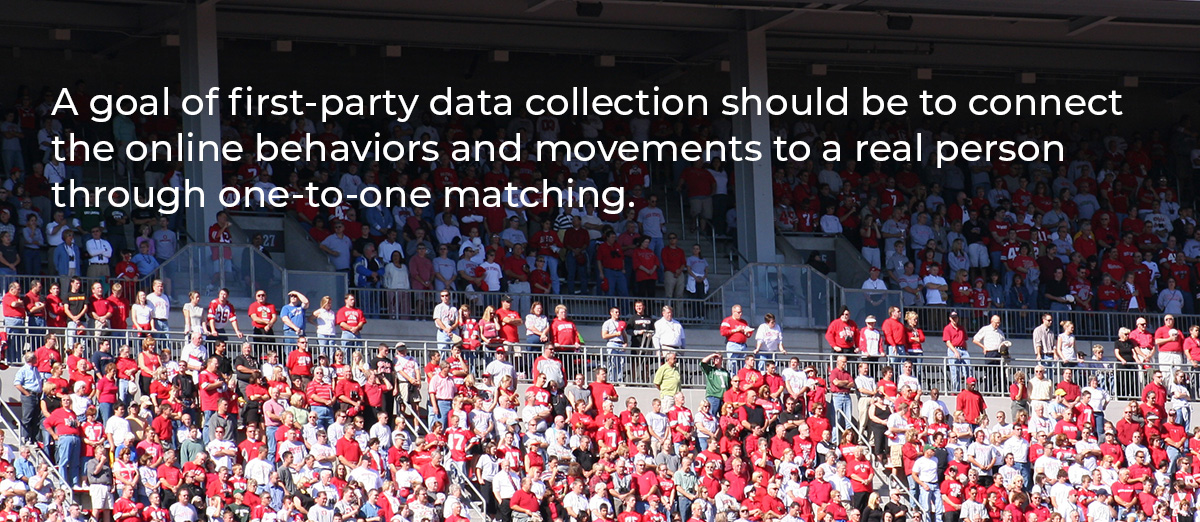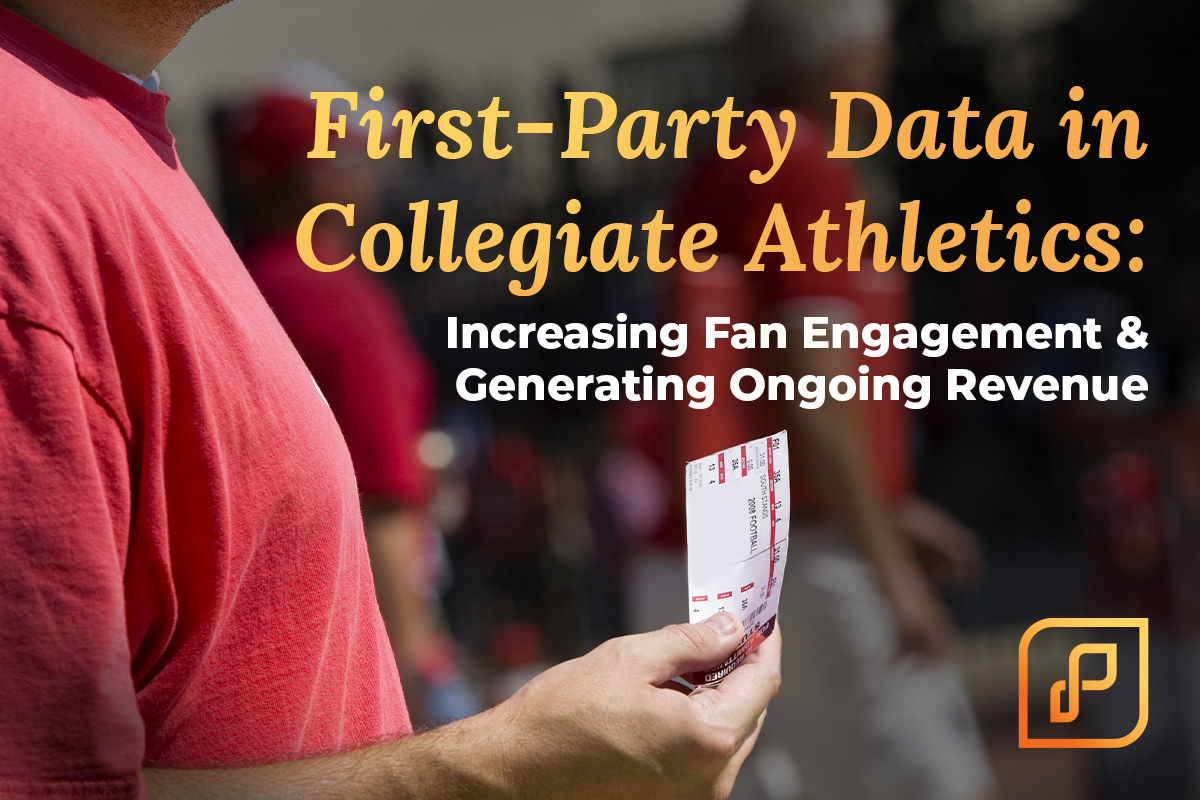June 29, 2023
The Pivotal Role First-Party Data Plays in Collegiate Athletics
In an era characterized by digital dominance, it is crucial for collegiate sports programs, and their affiliated collectives, to understand the pivotal role of first-party data in connecting online interests to offline individuals.
Additionally, this report outlines key insights, challenges, and opportunities associated with first-party data usage in college sports and advocates for strategically incorporating data-driven approaches to enhance fan engagement and revenue generation.
First-party data refers to the information collected directly from individuals or entities who have a direct relationship with a brand or organization. In college sports, first-party data encompasses data gathered from students, alumni, fans, and other stakeholders who engage with college sports programs in various capacities.
For example, it could include a fan buying a jersey on the school’s website, an alum signing up for an email list, or a student following the sports team’s Instagram account. The college can use that information to hopefully connect the online behavior to the real-life individual to personalize marketing material for them in the future to increase revenue and engagement.
The Importance of First-Party Data
First-party data allows college sports programs and collectives to gain insights into the preferences and behaviors of fans and stakeholders. By analyzing this data, personalized marketing strategies, user content, and individual experiences can be developed to enhance fan engagement and loyalty. This personalization extends to marketing messages, product recommendations, email campaigns, and website content. When fans feel that a college understands their needs and preferences, they are more likely to engage.

This matching provides the opportunity to generate advanced audience profiles (including demographics, other interests, consumer history, and geography), create more personalized messaging, and generate omni-channel messaging that extends beyond a single platform.
But how do college sports programs and the collectives associated with them achieve this matching?
Type of Data
Matching the online persona to the offline individual is difficult for many reasons, but the type of data collected significantly impacts this equation.
Although collecting an email address provides a great opportunity to reconnect through a newsletter or other similar follow-up emails, it does not allow for any direct matching to the offline consumer. Email collection should be viewed as an entry into first-party data collection, but not the goal.
A common practice in more advanced data collection includes name and phone number. Follow-up contact via text message is often viewed as a more personal interaction than email, and the provision of this phone number also begins a connection to the offline consumer. However, while name + phone number provides the opportunity to connect with an individual, the match rate is very low; in our experience, this is typically only 10-15%.
In contrast, requesting first name, last name, and home zip code delivers a consumer matching rate between 40-50%. The request for a zip code rather than a phone number is not only perceived by the individual as less invasive (therefore, increasing the opt-in rate) but also increases the potential for matching to an offline consumer by 4x!
It is important to note that the quality of any collected data is absolutely the most impactful consideration regarding data. A handwritten name or email address that is misread when entering data, a transposed digit in a zip code, or a phony phone number all result in a zero percent likelihood to ever match the data set. Vigilance in data management rules must be a top consideration of any first-party data collection program.
Conclusion
Incorporating first-party data into college sports fundraising and athletic collectives is essential both to increase fan engagement and to generate ongoing revenue. While basic data collection provides some opportunities for ongoing interaction with potential donors, the development of a quality first-party data strategy that allows for consumer data matching truly opens the doors for growth.
For university athletic departments and collectives to be most successful in these new first-party data ventures, it is essential that techniques are in place to not only gain a high volume of subscribers but also to ensure the quality of these datasets remains high.
As the number of engagers with a campaign grows, organizations must consider both short- and longterm goals. While the short-term objective may be to gain as many leads as possible through email or phone number collection, the long-term goal of sustainable fundraising may hinge on the collection of quality consumer-matched data such as name and home zip code.
As the landscape of collegiate athletics and collectives evolves, the organizations that recognize future opportunities will be best positioned for success.
No related posts found.




